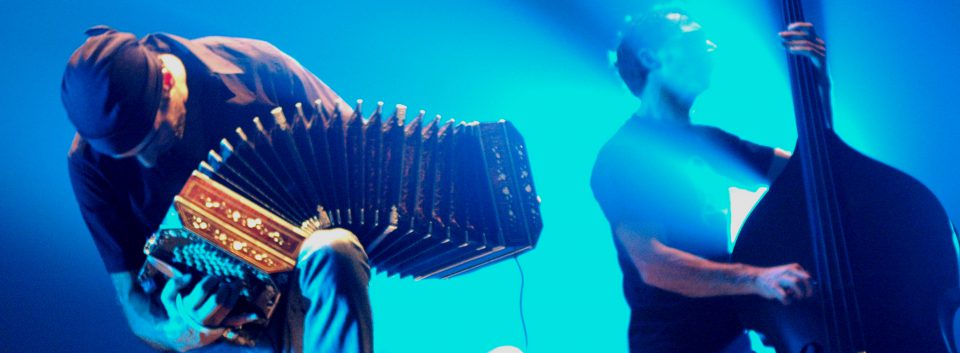
Pianist, composer, and bandleader Chucho Valdés, leads the ensemble in the Irakere 50 tribute and celebration at the Arsht Center in Miami, on Friday. The event featured the participation of reedman Paquito D´Rivera (far right, in white) and trumpeter Arturo Sandoval (third from the right) both key figures in the original Irakere.
The Chucho Valdés’ Irakere 50 concert at the Arsht Center in Miami Friday night — a tribute celebration of the Cuban band that from 1973 to 2005 set a high watermark in Afro-Cuban jazz — promised an evening of surprises tinged with nostalgia. But the most notable surprise was how vibrant and relevant its music remains. As for nostalgia, there was no need to go back to memories.
It was all there — the rich writing, the spectacular instrumental virtuosity, the high energy, the humor.
Some of the charter members of the Irakere that astounded the audience and fellow musicians in its Newport Jazz Festival debut at Carnegie Hall in 1977 have passed away, perhaps most notably the trumpeter Jorge Varona, the guitarist Carlos Emilio Morales, and reedman Carlos Averhoff. Others remain in Cuba. So the ensemble last night was comprised of Valdés regular quartet — José A Gola, electric bass; Horacio “el Negro” Hernández, drums; and Roberto Jr. Vizcaíno Torre, percussion — augmented by the surprise addition of Valdés youngest son Julian, on percussion, and expanded with Eddie de Armas Jr. and Osvaldo Fleites on trumpets; Luis Beltrán and Carlos Averhoff Jr., on saxophones, and the vocalist Ramón Alvarez. What made this evening historic, however, is that the lineup also included two key figures of the original Irakere, reedman Paquito D’Rivera, who defected in 1980, and trumpeter Arturo Sandoval, who left the band in 1981 to form his own group and defected in 1990. They hadn’t performed together with Valdés in decades.
The concert opened with Valdes’ powerful “Juana 1600,” as Irakere’s shows once traditionally started, and closed with the irresistible “Bacalao con Pan,” Irakere’s opening salvo and first big hit in 1973. In between, there were Irakere gems such as “Estela va a Estallar,” (Valdés’ reworking of “Stella by Starlight”), Sandoval’s fiery “Iya,” D’Rivera’s Valentine to Mozart and the blues with his cheeky arrangement of the Adagio, and a moment among old friends as Valdés, D’Rivera, and Sandoval, playing as a trio, revisited “Body and Soul” (how many times they must have had these sidebars while in rehearsals to stretch out playing a jazz standard?). The program also included appearances by guest vocalists Pancho Cespedes (leading a version of “Dance of the Ñañigos,” Valdés reimagining Ernesto Lecuona’s “Danza Lucumi” with a children’s choir) and salsa star Luis Enrique.

Chucho Valdés, Arturo Sandoval, and Paquito D´Rivera, variations on “Body and Soul.”
Sometimes lost while discussing the achievements of Valdés and Irakere with such a smart and muscular mix of Cuban popular styles, Afro-Cuban ritual music, jazz, funk, rock, and classical music, is that this was also quite a powerful (and successful) dance band.
“We never were a dance group. We were a jazz group,” Valdés firmly told me recently. However, cultural and pragmatic reasons made Valdés, and by extension Irakere, approach their work in parallel tracks: Afro-Cuban jazz experimentation and dance music. (Duke Ellington, another pretty good jazz composer, also made a living writing for and leading a pretty good dance band.)
“Jazz in Cuba had a limited audience, so we started playing dance music to attract new audiences for what we were doing — and it worked incredibly well,” he told me. “We had a tremendous dance audience, and often, they just stopped dancing and listened.”
At the Irakere 50 concert Friday night, the audience came to listen — and it listened, clapped in clave, sang along, and got on its feet and danced. It was the whole Irakere experience.
